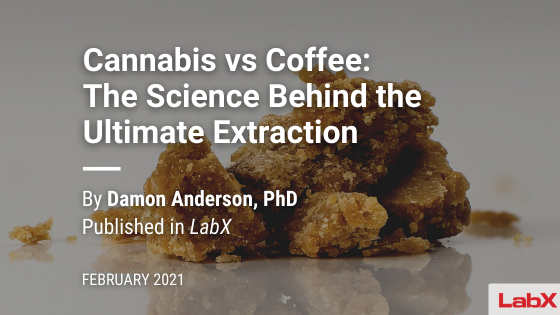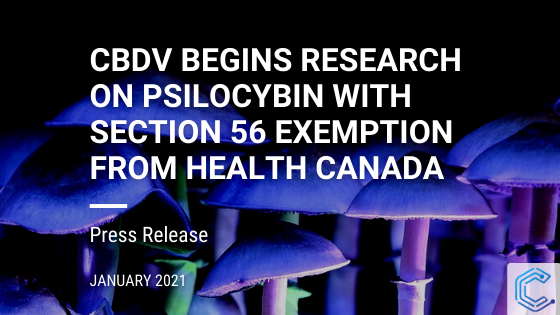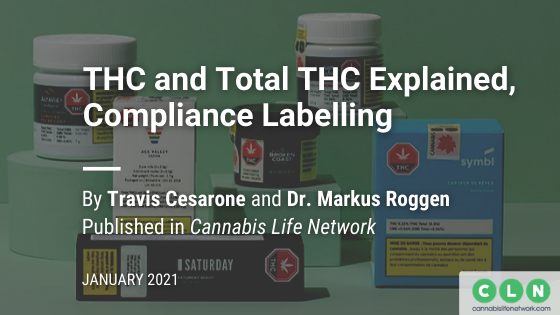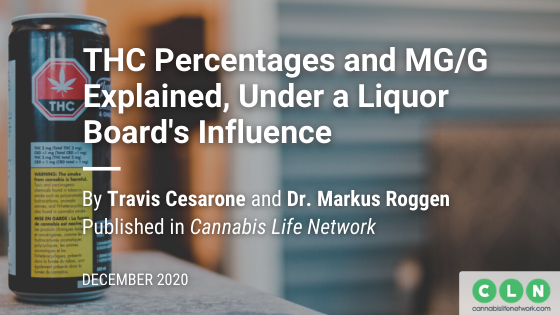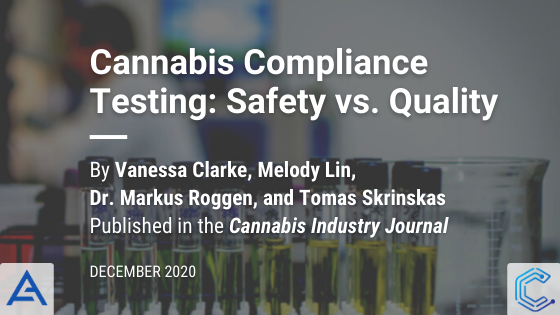A thorough cannabis product development process goes far beyond extracting and packaging. Performing advanced analytical testing at each and every stage allows producers to know the quantity, quality and behaviour of compounds in samples. Here are the four key stages from flower to consumption.
In this #AskAnExpert, Dr. Markus Roggen explains how THCa and CBDa change after they are distilled and what happens to their acid groups after an acidic cannabinoid is decarboxylated.
The intoxicating ingredient, THC, was officially isolated in 1964. After 56 years, an isomer of THC, Delta-10-THC, was identified in cannabis extract for the first time. But, how many different variations and isomers of THC are truly in cannabis, and how many more can exist if we go beyond the realm of quantitative data?
Whether filtered coffee, French press, or espresso, all methods for brewing involve the central process of extraction. Each brewing method requires a consistent and ideal size of grind, ranging from coarse to super fine, and each extraction method calls for uniform coffee particles in order to deliver the unique characteristics of the brew.One could think of cannabis or hemp concentrates in a similar light.
Our new services offer comprehensive insights into plant material, extracts, end-products and even the smoke/vapor by using state-of-the-art analytical instruments. By understanding the chemical fingerprint of the material, cannabis producers can eliminate impurities, adjust potencies, and optimize extraction processes before wasting money and resources on producing inconsistent end products. As a chemist I am really excited about adding NMR and high-res mass spectroscopy to the cannabis testing offerings
Learn the differences between THC and the THC total based on Health Canada’s compliances and beyond.
Dr. Markus Roggen has a bone to pick with the way total THC is presented on labels: “I don’t think so much in weight, I think in the number of molecules… moles”
Supercritical CO2 extraction plays a significant role in the cannabis industry. However, there are many factors that affect extraction outcomes, such as extractor temperature and pressure, flow-rate, and separator conditions. DELIC Labs developed a large and diverse database of cannabis extraction runs. This database has allowed the data scientists’ team at DELIC Labs to save clients time, money, and resources.
A lack of budget and awareness means cannabis companies don’t test beyond what is required by health canada, which means searching for unidentified, potentially dangerous compounds, as well as tests for quality, rarely occur.
If you think hemp processing works the same as cananbis extraction, think again. And we totally over-think things, so here is a computational chemistry answer, why it is different.
Data analytics in sports was once a new, experimental concept before it was embraced. In the cannabis market, data analytics is a relatively new tool in our arsenal that can vastly improve our understanding of extraction.
The vape crisis was the outbreak of E-cigarette or vaping product use-associated lung injury. It was linked to the toxic organic compounds that are formed when vitamine e acetate and other compounds found in vape oils are exposed to heat. The crisis demonstrated the need for aerosol analysis if want to ensure the safety of consumers in the industry.
In an interview from the Emerald Conference 2020, Dr. Markus Roggen tells us about his slightly reluctant entry into the industry, the maddening inefficiencies in current extraction protocols, and his mission to put solid science at the heart of the industry.
The efficiency and quality of cannabis extracts is directly affected by how the cannabis is milled before extraction. Read here how and why.
When revenue is falling, most companies want to reduce material costs. But before you do that, consider: have you addressed all of your production inefficiencies?
A peer-reviewed article published by Dr. Markus Roggen on a 7-step approach to product safety and production efficency.
Blast into the past with us to learn about the history of the use of cannabis- dating back to 2700 BCE!
There are many common inefficiences when it comes to cannabis extraction; many of which can easily be overcome. We look at how companies like outco and fritsch have optimized their extraction processes.
Just because terpenoid sounds fancier than terpene, does not mean it is the rigth term to use. Different chemical terms have specific meanings, and the correct use of them makes us all better people.
Many in the cannabis industry are skeptical of big pharma; and sometimes for good reason! But there many things they get right (and that we are currently struggling with). If we want to survive as long as big pharma companies, we need to learn from them.
Delic Labs’ abstract to the ACS talk in 2019 on the topic of decarboxylation, published in Terpenes and Testing
There are many believes about how to judge the quality of cannabis, the ash color being one of those. But we are praying to false gods, as this article by Dr. Justice and Dr. Roggen explains.
The cannabis industry is filled with people who make incorrect assumptions based on anecdotes and incomplete data. And Dr. Markus Roggen is not immune. What makes a good scientist is a willingness to prove yourself wrong- and thats exactly what he did. Its a willingness to prove ourselves wrong that will help the industry progress.
Most extraction methods are just upscaled versions of what your college roomate used 30 years ago. Dr. Markus Roggen points out that we have the ability to make these processes more efficient to save time and money in the long run. But people are so focused on the “gold rush” of the cannabis industry that nobody is stopping to think what they are doing.
There is a lot of talk about the conversion of THCA to THC in the scientific cannabis community, but nobody can agree on the best conditions for this reaction to occur. Knowing the best conditions, and working under these conditions, can save companies time and money. So, Delic labs teamed up with PerkinElmer to design a technique to watch this reaction in real time, so the best conditions for this reaction can be determined.






